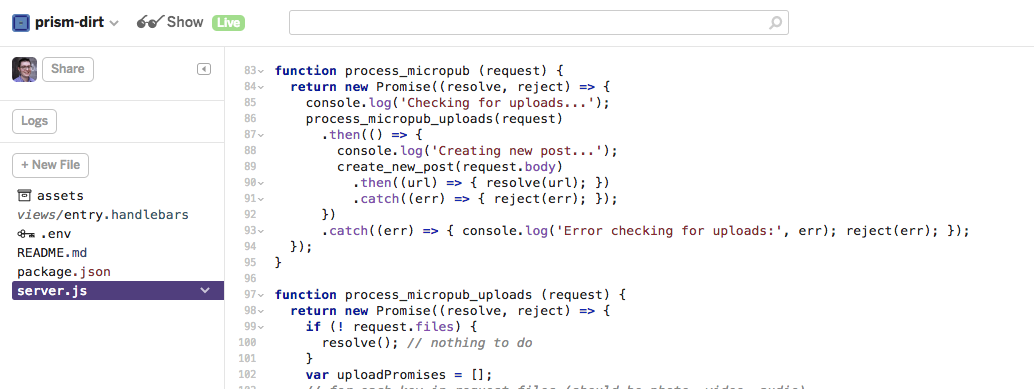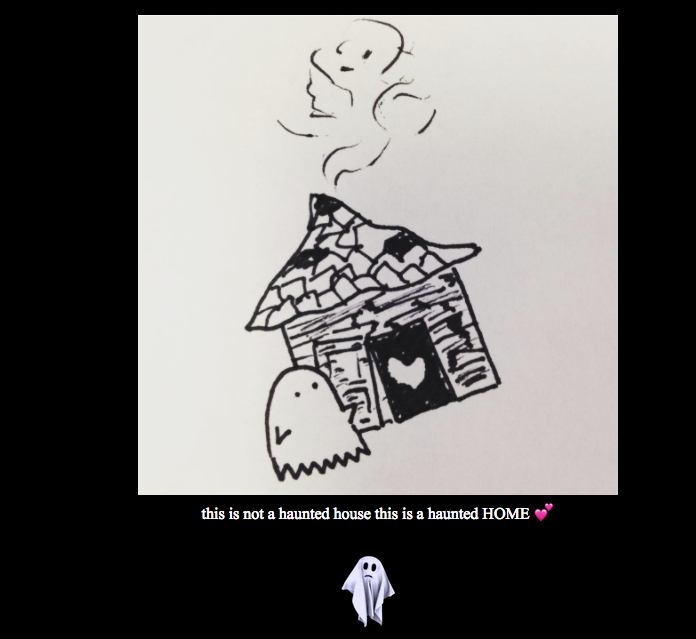A Ghost (Party) is Haunting the Silo'd Web
This post is a rough summary of a lightning talk that I gave on February 28th at the Bring-A-Hack NYC with Hackaday + Ultimaker + New Lab. Many thanks to Shayna Gentiluomo for organizing and sometimes co-conspirator Matt Griffin for nudging me to speak!
I have a lot of distrust for social silos like Facebook and Twitter which draw us in with the promise of connecting with family, friends, and interesting people, but I sometimes have trouble articulating that in a succinct way. Thankfully, I saw a perfect example this morning:
Posting on the @facebook website is not working in Mac OS today. JavaScript eats CSS & HTML, making data entry field disappear except for a spookily disembodied close-box X. Been this way a few hours. — @zeldman, 9:53 AM - 28 Feb 2018
Some Facebook team pushed an (untested?) update which broke the website, preventing some users from posting. "Move fast and break things". These silos don't value us or our content. So, we should get out. But what is the alternative?
The IndieWeb helps us take our content back, by posting to our own websites on our own domains. With some work, we can even get the benefits of these social networks and take our conversations with us. There’s a whole lot of great stuff on the IndieWeb website, so go spend a couple of days reading it. But I’m not here to talk about all those good things today. I’m here to talk about how I used them to do a dumb hack.
ghostparty.today is a website for Ghost Party – an improv project that has a ... certain aesthetic. Specifically the website was pitched as “exactly like the Heaven’s Gate website” but we compromised on “extreme Geocities”.

My Ghost Party co-host (co-ghost) built the first version of the site on Neocities.org, a lovely hosting provider that recaptures the feel of editing raw HTML directly in your browser. However, hand-editing HTML gets exhausting and sometimes you just want to post things to Instagram (and, of course, Ghost Party has an Instagram).
And Instagram is fine as a marketing platform! Lots of people look at it and like the pictures. But what about our website? Our aesthetic?
Micropub is a standard (and now W3C Recommendation) designed over some years of practice from the IndieWeb community that defines a way for apps and clients to easily make new posts to any website (even yours) if it supports Micropub.
I used Glitch, an amazing community and JavaScript-server-app hosting service, to make a simple micropub service for ghostparty.today.

It accepts posts via micropub, including file uploads, and uses the Neocities API (hey, it’s not the 90s! Neocities has an API!) to upload the files to our website. Then, it fetches our site’s index.html, adds the content of the new post, and uploads it back. You can find the source here on Glitch and fork it for your own purposes!
Now that our site supports micropub, we can make use of a wonderful service called OwnYourGram. Once we give OwnYourGram permission to post to our site and read our Instagram feed, it will poll our Instagram account and copy each new post back to our website, where we can display it however we want.

We can go a step further, using an IndieWeb building block called Webmention and a service called brid.gy, to bring all of those responses, those Instagram and Facebook likes and comments, Twitter retweets, and more, back to our site for display.
And to show how it works, here’s a micropub client call Quill that works for any micropub-enabled site. Let’s make a quick post, now!

Once we hit the "Post" button and refresh the homepage, we can see the new post on the site!

This was the end of time time. I would have like to further encourage folks to check out Homebrew Website Clubs in their own communities, or to start one if they don't exist. They're part show-and-tell, part support group, and part mad science lab for people who love the web!
